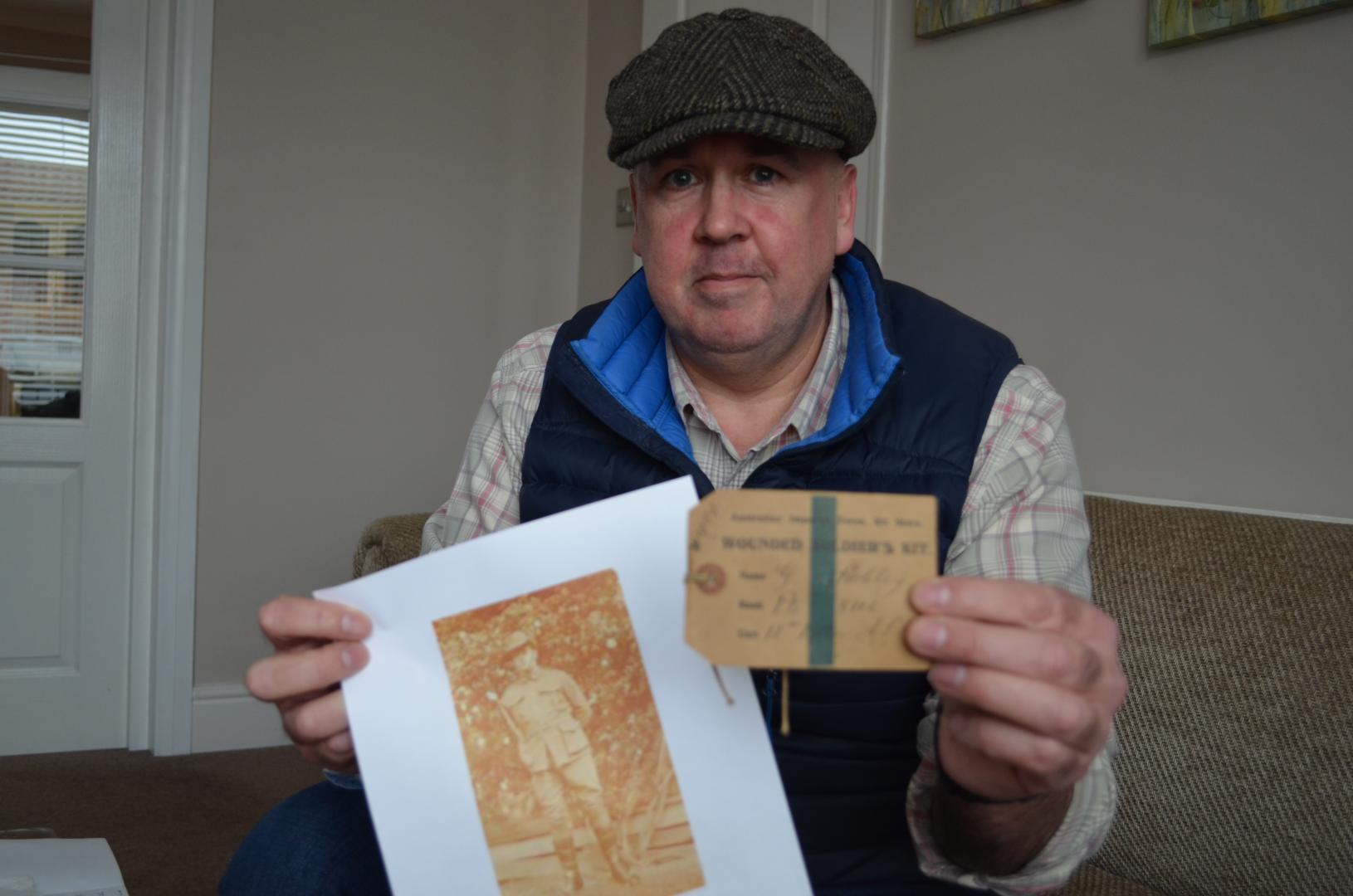LAPEL badges and a rare kit label belonging to an Australian First World War soldier have been sent to the veteran’s grateful son, who is due to celebrate his 100th birthday next month.
George Hobley, from Western Australia, was 28 when he joined the 11st Battalion Imperial Force in February 1916.
The six-feet tall farmer was initially deployed to Egypt but found himself in the thick of the action in northern France at the Battle of Pozieres by August during the Battle of the Somme.
He was badly wounded on August 20, transferred to hospital in England, and later discharged from the army on June 24, 1917.
History buff Bob Dixon, from Cockfield, was browsing books in a charity shop in Barnard Castle before the Covid-19 lockdowns when he spotted the Australian soldier’s wounded kit label.
He said: “I have been collecting them for about 30 years. It’s just a piece of card really, but they are quite rare, especially for Australian soldiers.
“They would have been attached to his kit when he was wounded and sent to the Australian storage that was based in Hammersmith, so how it found its way to Barnard Castle I don’t know.”
As well as the kit label, which would normally have been discarded upon a soldier’s discharge, there were also three lapel badges belonging to Pte Hobley.
Mr Dixon, who served in the Royal Army Medical Corp for 30 years, added: “I like researching and so I set about seeing what I could find out.”
After posting the items on the internet he was contacted by an Australian historian, Kathryn Shapland, who runs a museum in Albany, Western Australia.
He said: “She got in touch and told me she knew about Pte Hobley. He had been one of three brothers. His brother Richard was killed in action at Gallipoli two weeks before George was wounded. His other brother, Joseph, was one of the last to go back to Australia and survived being gassed.
“George had gunshot wounds to the chest and a shrapnel wound to the right arm. He would have been stripped of his kit when he was transferred to England and that would have gone to Hammersmith.”
After being discharged and en-route home to Australia Private Hobley had to undergo surgery at Alexandria, in Egypt, to amputate his right arm.
Mr Dixon added: “He was listed as dangerously ill at the time. But he didn’t let life stop him after the war. He got married, had four children and helped build his own house.
“I found a relative who informed me that his son, Evan, is still alive. I’ve been in contact with him and am sending the label and badges to him as it would be the only tangible link to his late father.
“I just hope they reach him before his 100th birthday in May.”
ADVERTISEMENT
Somme hero’s war badges returned to 99-year-old son
ADVERTISEMENT
ADVERTISEMENT
ADVERTISEMENT






